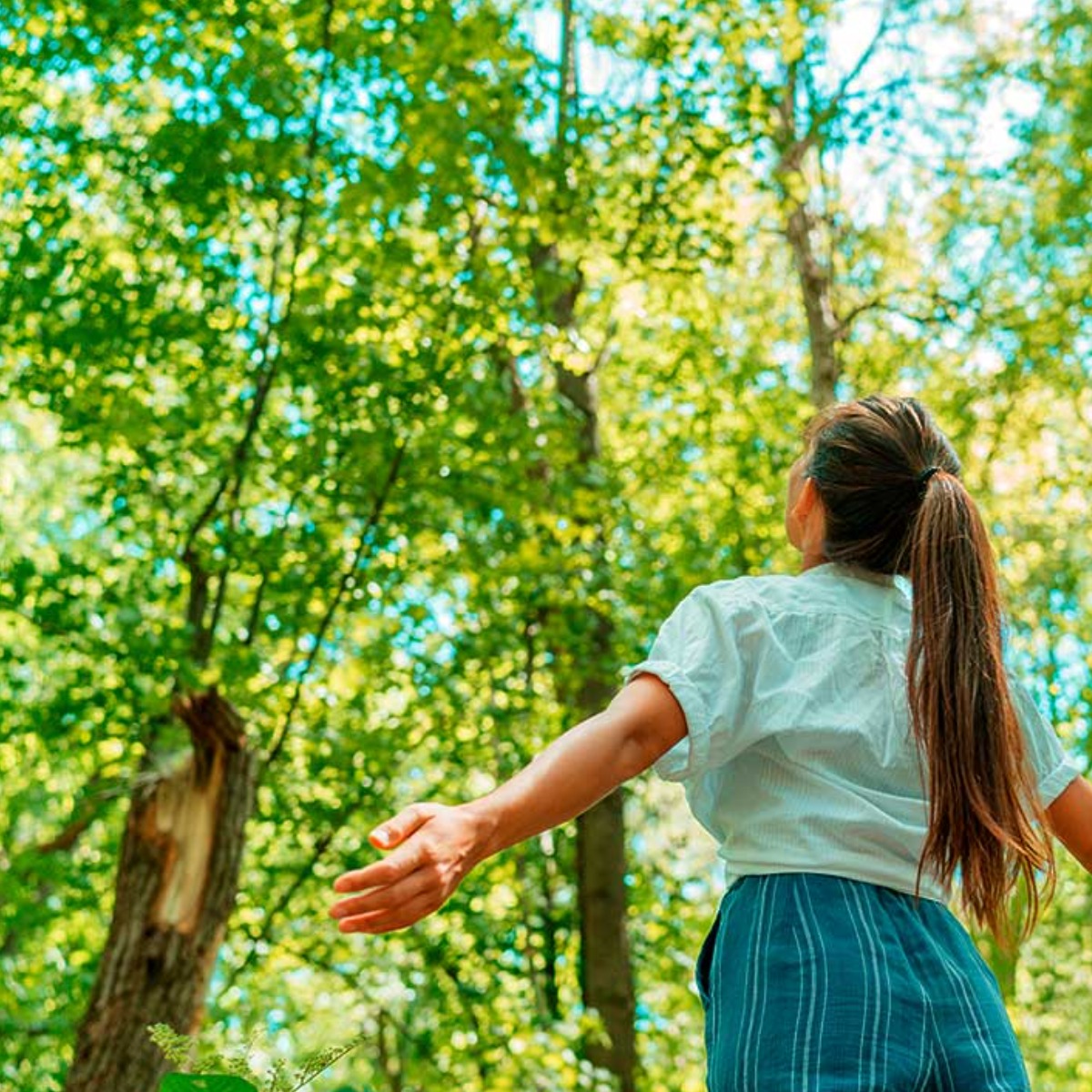
The Miyawaki method: how small urban forests can help recover biodiversity worldwide
It was created by the botanist Akira Miyawaki, who dedicated his life to studying Japans vegetation and developed tools that revolutionized the practice of afforestation worldwide Chinju-No-Mori. The expression describes sacred forests close to Japanese temples and it could be said that it was one of the inspirations of the Botanical acclaimed Akira Miyawaki career (1928-2021).
The doctor in Science, born in a mountainous area in Okayama, in western Japan, became an eminence of ecology, a world that passionate it until its last day of life, by developing a system that turned around the world and contributed to the recovery of biodiversity in different latitudes: the Miyawaki method. Japanese biologist dedicated his life to studying the vegetation of Japan -published the 10 volumes of vegetation of Japan -, while developing tools that would revolutionize the practice of Forestry worldwide. In BBC Mundo we tell you who this character was, what his method is about and how he continues to inspire globally the struggle for the protection of biodiversity and the environment. Miyawakino philosophy I wish anything but create the forest of life, The basis for the survival of all the life of the land and the key to human development, with the citizens of Japan, the rest of Asia and everyone. I would like to make this dream come true. Lets raise trees together, from under our feet, to the world. The words were written by the Botanist in 2006. In those days he received the Blue Planet Prize, an international recognition award that highlights the exceptional contributions to the protection of the environment at the global level. At that time, Miyawaki was already 78 years old and had planted 30 Millions of trees and carried out scientific work in forests and cities from 38 countries around the world. Many years before, I had reached the ecology by accident. I left primary school in the late thirties, in the midst of a disastrous war. My brothers went to war and my father decided that I, the youngest of the four, took charge of the family farm. However, perhaps because he thought that I would not live up to the harsh agricultural tasks, since he was a rather weak and lazy guy, he sent me to the Higher School of Agriculture and Silviculture of Niimi, ?he said in an essay when he received The prize. Academic studies became more interesting for him when he entered the Secondary School of Agriculture, and when, shortly after the bombings on the Japanese capital during World War II, he gave the exam to study at the Higher School of Agriculture and Tokyo silviculture. Then I would enter the University of Hiroshima to study biology. That was where a strange interest in the field of study arose: weeds. The branch interested few. Weeds are on the border of science and agriculture, his teacher, Yoshio Horikawa, told him when Miyawaki decided to do his thesis in the study of that vegetation. But, the botanist did not care and dedicated much of the beginnings of his career to investigate them. Native forests in degraded areas; His investigations caught the attention of Reinhold Tüxen, then director of the Federal Institute of Cartography of the German vegetation. With financial support from the Germanic Government and other organizations, between 1956 and 1958, the Japanese could deepen their knowledge and develop what would later be transformed into the Miyawaki method. His methodocon the investigation that began under the eaves of Tüxen in Germany, and already of Return in Japan, Miyawaki managed to demonstrate that through the dense plantation of endemic vegetation it was possible to restore the biodiversity of ecosystems ten times faster than with traditional methods. The basis of the Miyawaki method is in the concept of potential natural vegetation. In simple, it is a projection - with the climatic and ecological conditions of the moment of measurement - of the native species that could proliferate in a specific area if there was no human intervention. The method developed by the Japanese botanist, points to the creation of forests, either in urban or degraded areas, privileging the use of these native species, which - in a whole - create diverse forest communities that allow to recover or reinforce their biodiversity. The speed with which these species and their resilience grow, in addition, allow to reduce the temperatures of their environments and capture greenhouse gases, playing a fundamental role in mitigating the current climate crisis. To reach that conclusion, Miyawaki compiled by Years data on the endemic species of Japan, generating maps of the existing vegetation at that time and also of the potential. That mapping is still useful as a model for the restoration of degraded habitats worldwide. The Miyawaki method reached different latitudes, with several successful experiences, in Asia, Europe, the United States and Latin America. Miyawaki Bosques, in Chile, sought to democratize the method and explain its steps: 1. Know the structure of the soil and determine the biomass; 2. Select native trees for planting; 3. Design the forest; 4. Preparation of the area to be planted; 5. Planting the selected trees and 6. Taking the forest for at least two years. One of the most relevant issues for Miyawaki, and also promoting their followers around the world, is the role of communities in the planting and care process of the forests. The return to the world of the first projects of Miyawaki was commissioned by the Nippon Steel Corporation. The metallurgical company sought to reforest the surroundings of one of its plants in Oita and entrusted the mission. The result was surprising and cemented the bases for the company to continue financing similar projects around Japan. One of the criticism that was made in his time to Botanic just pointed to his collaboration with large multinationals, which at the end of the last century sought to amilaan the impact that the damage to the environment associated with its operations was having in their public image. But, Miyawaki always said that his collaborations were only with those who were really committed to the recovery of biodiversity. I always replied that I would not help planting vegetation as a temporary form of camouflage, he said in 2006, at the time of receiving the Blue Planet Prize, occasion also recalled his contributions with Mitsubishi. In Latin America; Mexico, Brazil and Chile, among others, took the inheritance of the scientist to encourage biodiversity in urban areas or recover them in degraded areas. The experiences of Brazil, Chile and Mexico the Miyawaki method was implemented in Brazil in the 90s by the botanist itself, who He studied for more than a year the Amazon of that country. In one of the projects, he said in 2006, he planted with dozens of volunteers more than 20 species of high trees in the area. The method was still used in Brazil to regenerate fragments such as Atlantic Mata, today highly degraded. The seed that planted the botanist also arrived in Chile, where this method has been used for years in urban and rural areas to recover biodiversity. In the capital of the country, Santiago, the Metropolitan Government is promoting a tender to implement 33 pocket forests, with the Miyawaki inheritance, in different communes. Also, through the sprout program, in December 2023, 600 species were planted in 150 square meters, under the method of Japanese botanist in the gardens of the University of Santiago de Chile. Mexico was no exception. The project of mini urban forests has also developed in its capital, in addition to other experiences in Talplan, Xochimilco, Monterrey and Puebla. The method was also applied at the level of schools to raise awareness among children about the climatic crisis and the importance of something as simple as planting trees for the future.
IT MAY INTEREST YOU
 Wood or tiles: What type of floor is better for a kitchen?
Wood or tiles: What type of floor is better for a kitchen?
The answer may surprise. It is about achieving warmth, texture and lasting attraction. The options for the kitchen according to wood or tile floors. Choosing the right floor for the kitchen is essential not only for the appearance of space, but also for its practicality. While wood or tile floors are excellent options from the visual and functional, are there any prevailing over the other? What option is better? The wooden and tile floors for the kitchen offer two different styles in the same design, creating contrasting styles.
 Posadas | Entrepreneurs and scientists join the Forest-Industrial Technological Meeting organized by the Northeast Conicet
Posadas | Entrepreneurs and scientists join the Forest-Industrial Technological Meeting organized by the Northeast Conicet
On Thursday, November 28, the Earth without Evil auditorium in Posadas will be the scene of the Forest-Industrial Technological Meeting (ENTEC) organized by the Northeast CONICET in conjunction with the Ministry of Climate Change of Missions. The event seeks to strengthen collaboration between the scientific, business and government sector to promote projects in the forest-industrial chain.
 Wooden gadgets for summer season
Wooden gadgets for summer season
Create spots that connect us with rest to get an extensive vacation feeling.





















